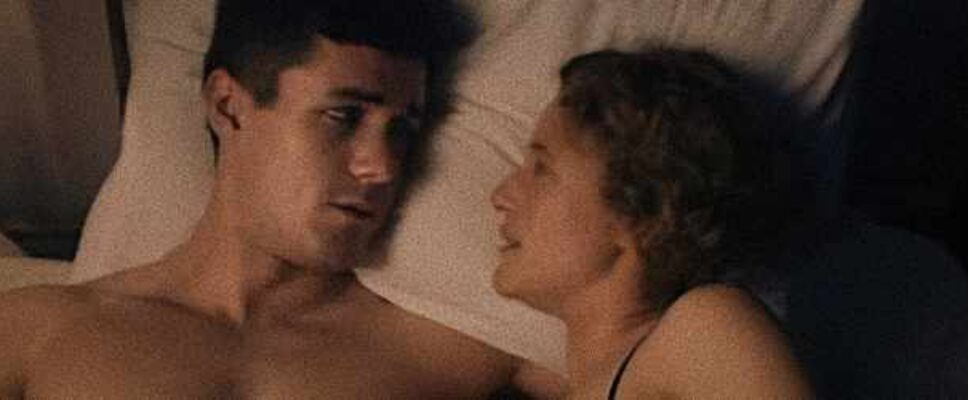Teresa Reviews “Agatha and the Curse of Ishtar” (2019)
Teresa reviews “Agatha and the Curse of Ishtar” (2019)
Fidelity to real life: 2 hatchets
![]() Max is real, the Woolleys are real, the timeline’s close, and England had compelling reasons to exploit Middle Eastern oil reserves.
Max is real, the Woolleys are real, the timeline’s close, and England had compelling reasons to exploit Middle Eastern oil reserves.
Quality of movie on its own: 2½ hatchets
![]() So many failed opportunities and unanswered questions, yet surprisingly funny.
So many failed opportunities and unanswered questions, yet surprisingly funny.
Read more of Teresa’s Agatha Christie movie reviews at Peschel Press.
Also, follow Teresa’s discussion of these movie on her podcast.
 This is a weird movie. It can’t decide if it wants to be a sex comedy, a second-chance-at-love romance, a mystery, or an examination of British realpolitik over vital resources. There’s also some sexism in the archeological biz and appropriation of native cultural goods being shipped off to British museums instead of remaining in the originating country’s own museums.
This is a weird movie. It can’t decide if it wants to be a sex comedy, a second-chance-at-love romance, a mystery, or an examination of British realpolitik over vital resources. There’s also some sexism in the archeological biz and appropriation of native cultural goods being shipped off to British museums instead of remaining in the originating country’s own museums.

Plus, a touch of Grand Guignol here and there.
Does this mashup work? Not really. The tone is wildly uneven and the bizarre, tinkling piano background music doesn’t help.
Let’s begin by examining what’s real. Agatha’s divorce from Archie became final in October 1928. Archie married Nancy Neele one week later. Agatha was struggling to rebuild her life, get back to writing, and had ideas for books other than mysteries. Those ideas eventually became her six Mary Westmacott novels, published between 1930 and 1956.


The Woolleys did major excavations at Ur in Iraq. The British had a strong presence there, having essentially squeezed a number of disparate, smaller states into one, larger, restive country they administered. The British government knew there was oil under the sand and they wanted it to fuel British warships and industry. The British consulate was large and powerful, with fingers in many pies and deals operating within deals.

After that, well, what you see was dredged up from the sand. If you’re thinking this film is accurate, maybe it is but only for a parallel universe about six or seven universes away from our own.
For example: Agatha might have enjoyed noisy, red-hot, scorched-sheet sex with Max but she would have never discussed it with anyone. As a well-bred Victorian lady, she wouldn’t have jumped him within a few days of meeting and inside an underground tunnel, either.
During the Great War, she didn’t work only in the hospital pharmaceutical wards. She worked in the wards, tending wounded soldiers with all the mess that entails. In her autobiography she recalls taking amputated limbs to the incinerator. You think she’d have the vapors over dissecting a monkey? And wouldn’t know the difference between a kidney and a liver? Not a chance.
There are also problems with the core mystery. There aren’t too many people involved. Obviously, Agatha, Max, and the Woolleys are not suspects. That leaves Lucy Bernard, her husband Sir Constance Bernard (the script gave him a poor first name), Marmaduke/Lord Ponsonby, Pearl Theroux, and Ezekial.
None of these people got enough screen time. Lucy’s cheating on Sir Constance but with who? Since Max is our hero, he’s off the list. Katherine’s keeping Leonard busy. That leaves Marmaduke and Ezekial. In her spare time, Lucy is also stealing the dig finds for resale on the black market.
It’s doubtful Lucy’s sneaking around with Ezekial. He’s both a native Iraqi and a representative of the native government, trying to keep an eye out for stolen antiquities. Marmaduke is the only man standing. I’m assuming that’s how Agatha worked it out but she never explains her reasoning. We never see a single scene where Lucy and Marmaduke even speak to each other so how did she know?
How did Marmaduke, an American, become Lord Ponsonby and the financier behind the dig? There should have been more explanation, maybe involving Lucy so we could accept they were having an affair and not just because of process of elimination.

How did Ella the monkey get the strychnine? Agatha’s deduction that Ella was poisoned made sense. It’d be darned difficult to hang a monkey; the beast will bite and claw and fight and climb up the rope and throw its poo at its hangman. But taking strychnine? My first thought was Indiana Jones and the Raiders of the Lost Ark. That monkey was poisoned because it ate poisoned dates. But we never see dates or any other toxic treat.
How did the dynamite get into the tunnel where Agatha and Max were locked in passionate embrace? Who put it there? We never find out.

There’s also the title. The Curse of Ishtar implies that there’s supernatural elements. That there’s an amulet or talisman of great power that will rain down destruction on the unworthy. There’s a big black piece of pottery that Max’s employer’s holding. Leonard reads the inscription to Agatha and it doesn’t seem to have anything to do with the plot at all, other than in the most metaphorical of senses.
Is the Curse of Ishtar the black, poisonous fluid seeping from the earth? Is it oil? I guess that’s what they meant. If the script wanted to make a point about money, greed, and oil combining into a toxic stew that poisons everything it touches, then it did it badly.
This should have been better. The material is there; second chance at love, naughty monkeys, imperial intrigue, adultery, and murder. The film looks good on paper but on celluloid it doesn’t amount to a hill of sand.

